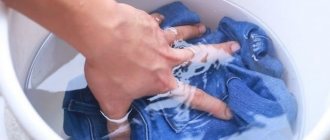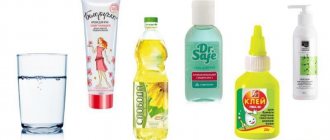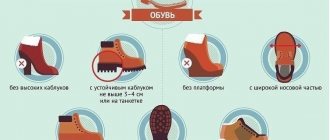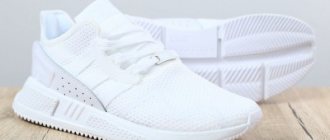Going outside for a walk in the frosty air and falling is painful, traumatic and very embarrassing. At risk are both young fashionistas wearing high heels and older people with impaired coordination of movement. This is all due to the soles of the boots, which are poorly suited for frozen roads. In this regard, the question often arises: what to do to prevent shoes from slipping in winter, but at the same time to be comfortable in them. There are many ways to correct mistakes made when buying the wrong pair. You can make your boots safe without waiting for the first fall, either on your own or by contacting specialists in a shoe workshop.
Primary requirements
The two main factors that determine the degree of slip are the material of the sole and the depth of the tread on it . The country of origin is important - it is advisable to choose one that experiences cold weather. Non-slip shoes provide good traction on the road, even when the road is icy or covered with snow. In winter, this possibility exists if there are soft tires.
Popular materials for making soles of winter and demi-season shoes and their properties:
- Thermoplastic elastomer. One of the most stable types, combining the qualities of thermoplastics and vulcanized rubber. It has strength, flexibility, frost resistance, and wear resistance. It retains its properties at temperatures down to -45 °C. Advantages: lightness, long service life, low cost.
- Thermopolyurethane. This is a polymer material. The sole made from it looks modern and has a number of advantages: wear resistance due to its high density, resistance to bending and abrasion, frost resistance at temperatures down to -50 ° C. It has good grip on the road surface, which virtually eliminates slipping. A disadvantage is the low degree of bendability.
An important rule for choosing non-slip shoes is to carefully study the tread. The main requirement for it is sufficient relief depth. A pattern with different directions is welcome, since only transverse or diagonal stripes will not provide complete slip protection. It is good if the teeth of the sole are arranged crosswise. A combination is possible when one part is made in the form of round protrusions, and the second consists of strips.
The size of the teeth depends on who the boots are intended for. A more elegant and discreet option is suitable for women, while powerful protectors with large elements are suitable for men.
Thermoplastic elastomer
Thermopolyurethane
Deep outsole tread
Drawing with different directions
The teeth of the sole are arranged crosswise
Special devices
The solution to the problem of what to do to prevent shoes from slipping in winter is to use special devices. You can purchase them or create them yourself using materials available in the house. Lifehacks will help you add anti-slip elements to your shoes.
Stickers
The materials used to make anti-slip stickers are polyurethane or vulcanized rubber. You can buy them in the shoe department. Stickers on the sole are selected taking into account the size of the shoe:
- the first is for boots or boots of size 35-38;
- the second - for 39-41;
- the third – starting from 42 and above.
Self-adhesive overlays can be used not only for flat soles, but also for models with heels. Before gluing, you should clean the sole from dirt and degrease it. The effect of the application is that it provides protection against slipping on ice in winter. They are also a preventive measure against rubbing. Can be used from several days to a month.
Anti-slip stickers
Before gluing, clean the sole from dirt and degrease it.
Use for flat and heeled shoes
Ice access
Anti-slip pads on shoes are common devices that protect against falls. Ice access shoes are a special design that can be attached to boots of any size. The shoe device is made of very high quality rubber into which steel spikes are inserted. This provides excellent grip on icy surfaces. Different types differ in a number of ways: material of manufacture, method of fixation, number of spikes. The best are steel ice access platforms, which have increased resistance to loads.
The products are removable, which allows you to use them only when necessary. Fixed on the sole, they are almost invisible from above. Such anti-slip shoe attachments have the following advantages:
- increased frost resistance - up to -40 ° C;
- versatility – there are sizes suitable for children and wide men’s feet;
- compactness - they can be easily packed into a bag;
- durability, allowing them to be used for several seasons in a row;
- ease of putting on and taking off;
- aesthetics;
- low cost.
A relative disadvantage is that they are not suitable for indoor movement. Therefore, you have to take them off when entering from the street. When walking on tiles or marble, they make a loud sound.
Rubber ice access shoes
Shoe crampons
Ice drifts with metal spring
Can be used for men's and women's shoes
FOLK WAYS TO MAKE FOOTWEAR STABLE IN ICY ICE
Tips from folk wisdom can also be useful in the problem of how to make the sole of a shoe completely non-slip.
For example, the stability of the sole can be effectively enhanced by ordinary adhesive tape. True, you need to choose a coarse fabric type of material, and not a thin bactericidal plaster. Cut two medium-sized pieces from the plaster and glue one of them on the toe side of the shoes, and strengthen the other in the heel area.
Adhesive plaster reduces the slipping of shoes on ice, but it wears out quickly, so you will periodically have to renew pieces of material on the sole. To prevent the patch from being noticeable, you can color it with a waterproof black marker or shoe paint before sticking it on.
The equivalent of a plaster can be rough felt. Cut pieces of felt to fit the shoe and glue to the toe and heel. Felt withstands friction with the surface well and allows you not to slip on it even in severe icy conditions.
You can also try the following method: wash the shoe soles so that there is no dirt left on them, dry or thoroughly wipe the surfaces. Take a tube of Moment glue or Superglue and apply it to the base in small zigzags or a mesh. Before the glue has time to dry, pour coarse sand on top of it.
The shoes cannot be used for several hours, as the sand must adhere well to the glue. Such a homemade anti-slip sticker is enough for about 3-4 days of regular wearing of boots or shoes, after which the procedure will have to be repeated.
If your boots or shoes have a corrugated base, then you just need to wash them more often and the sliding effect on ice will noticeably decrease.
This happens because when the raised protrusions of shoes or boots become densely clogged with dirt, the sole base is leveled and begins to “ride” on any slippery surface. A simple care procedure will successfully eliminate this effect.
If you are disgusted by the idea of covering dress boots with sand, plaster or felt, try using the following technology: take fine sandpaper and rub the sole with force. The boots will slip less.
A good option for making shoes more stable, but requiring some skill, looks like this. Take an old pair of boots with a good grooved base and cut off the grooved layer with a shoe knife, trying to get it as thin as possible.
Now pick up the shoes you want to make non-slip. Treat the sole base of fashionable boots or shoes with a thick layer of silicone (at least 5 millimeters) and apply a cut relief stencil. You need to apply force so that the design is imprinted in the silicone layer.
Remove the homemade stencil and dry the silicone pattern with a hairdryer. This way you can create an anti-slip tread on your boots or boots with your own hands and in a short time.
Craftsmen also claim that raw potatoes help reduce the slip of the sole on ice. To do this, you need to take one root vegetable, cut it in half and rub the cut on the surface of the toe and heel.
Most carefully, you need to use the following folk method, in which the surface of the sole is scratched with a nail or other sharp means at hand. Its base, of course, becomes grooved and less slippery, but if you try too hard, it’s easy to ruin your favorite and beautiful pair. Have a nice non-slip winter, warm and stable boots!
Popular articles Stuffed zucchini “For those on a diet”
How to make non-slip soles at home
Slippery shoes: how to make the soles stable How to make the soles non-slip at home What to do to prevent shoes from slipping in winter - proven tips How to make the soles non-slip at home How to make the soles of shoes non-slip at home
How to make non-slip soles at home
To give boots stability, you can use both folk remedies and professional ones. There are several ways to make your shoe soles non-slip at home with your own hands. Each of them has its own characteristics.
Band-Aid
The safest method for shoes. The adhesive plaster is glued to the sole crosswise in two strips. For this purpose, a product sold in rolls is more suitable. This anti-slip method is a temporary measure. The adhesive plaster will not last long and may come off quickly. Usually it lasts for several hours when walking. If the need has not disappeared, you can cut off a new piece and make the shoes non-slip again.
It is recommended to choose an adhesive plaster that has a rough surface rather than a smooth one.
It is better to choose a patch with a rough surface
Apply two stripes crosswise to the sole
Glue with sand
Slippery soles can become quite stable thanks to ordinary sand. In addition to this, this method will require degreasing liquid and glue. The service life of the non-slip layer will depend on the quality of the latter. “Moment” is best suited, but you can use regular PVA. The sand should be coarse-grained.
The sequence of actions is as follows:
- Wipe the sole from dirt and dry it.
- Degrease the surface with acetone or alcohol.
- Spread the glue randomly or, if desired, in any pattern, such as a mesh. The main thing is that the entire surface is covered.
- Let the glue dry slightly.
- Pour sand on top and press the sole firmly against any surface.
- Wait until completely dry.
This will make the soles of your winter boots rougher and less slippery. The method will make walking safe for a period of about a month. After the specified time has passed, the process must be repeated.
Felt
A very simple way to ensure non-slip soles. Felt is a material that increases friction force. This provides stability when walking in winter shoes. You should not cover the entire sole with it; you only need to cut out a few pieces of felt, then glue them to the heel and toe. You can use shoe glue, PVA, “Moment”. In frosty weather the material will last about two weeks. Slush is destructive for him.
Traditional methods using glue require it to dry completely.
Emery
Sandpaper will help make the sole non-slip at home. This abrasive has thick cutting edges, which increase the friction force several times. There are two ways to use the material:
- Glue pieces of sandpaper to the toe and heel. Such strips can be purchased at the hardware department. They last for several weeks.
- Regularly rub your soles with sandpaper, especially before going outside when there is ice. The method is quite aggressive and does not contribute to good preservation of shoes.
Sandpaper should be selected with the coarsest grit size. The disadvantage is that the sole treated in this way scratches the floor.
Apply sandpaper to the sole of the shoe
Regularly rub the soles with sandpaper
Nylon stocking
An original way to prevent shoes from slipping in icy conditions is to use unnecessary nylon tights or stockings. They need to be set on fire, and when they start to melt, don’t get confused and quickly direct the falling drops onto the sole. Mainly the toe and heel areas should be covered. It is necessary to drip on one place several times to form tubercles. They will protect against slipping on ice, forming, as it were, an additional artificial protector. Such protection has a long service life and does not damage shoes.
Water repellents
You can increase the degree of friction by reducing the moisture level of the sole. To prevent winter shoes from slipping like skis, you need to treat the soles with a water-repellent agent. A special spray to protect shoes from moisture is good. The treatment will have to be repeated every time before going outside.
Scotch
If your favorite shoes slip in winter, this is not a reason to give them up. The problem is solved using improvised means. You can glue double-sided tape to the sole. It will last a long time and save the owner from falling.
Dye
If your winter shoes slip, you can use the paints contained in the kits for children. Expanding under the influence of temperature, they form a three-dimensional pattern. You can involve children in this creativity by processing their shoes. The effect does not last long, but this does not deteriorate the products, since the paints are easily washed off.
Slippery winter boots - what to do?
If your winter boots have slippery soles, you don’t have to go to the store to buy new shoes. At the moment, there are a number of ways to solve this problem at home. Next we will look at both the simplest folk methods and special methods.
Making boots non-slippery using folk remedies
When trying to make winter boots safe, you can use several folk recipes that make the soles of shoes non-slippery. Let's look at the current methods in more detail:
- By cutting a piece of felt from old felt boots, you can glue it to the sole of winter boots. The method will make the shoes absolutely safe and resistant to ice.
- Glue and sand also help well in combating slippery soles, but their effect will last no more than 1 week. If the slippery sole of winter boots causes inconvenience, then it is enough to apply glue to it and sprinkle sand on the surface. Within 24 hours the shoes are ready for use.
- A medical patch is a method that allows you to solve the problem with boots for a while. Simply stick the patch on the sole of your shoe, increasing stability on slippery surfaces. The service life of a medical plaster is 2-3 days.
- You can also ensure safe movement on slippery surfaces by gluing fabric-based sandpaper to the sole. This method will protect against falls and slips, but the lifespan of the method is no more than 10 days.
- Another short-term way to solve the problem of slippery boots is to rub the sole of your winter shoes with potatoes. The product contains starch, which prevents slipping. The effectiveness of this method will be reduced to zero within an hour after the walk.
Professional ways
These methods make winter shoes non-slippery, ensuring safe movement on ice throughout the winter. The most effective options are presented below:
- Rubber pads are sold in shoe stores and effectively fight ice. To use them, you just need to buy a couple of pads and attach them to your boots before going outside.
- Another similar option is ice boots, which are also linings for winter shoes. The main difference is that the surface has metal spikes that prevent slipping on ice.
- Polyurethane protection is not only highly effective, but also popular. The thing is that it gives 100% results and guarantees safety of movement on slippery surfaces. To apply protection, just go to a good shoe repair shop, where a specialist will apply a special relief surface to the shoes.
Let's take drastic measures
If the previous methods seemed unconvincing, then more serious methods can be used to solve this problem. Slippery boots are dangerous shoes. You can eliminate it by taking radical measures:
- Attach staples to the soles of winter boots using a construction stapler.
- If the shoes have thick soles, then small screws can be screwed into them, cutting off the protruding part. It is enough for the metal to stand out minimally from the profile of the boots, increasing stability on slippery surfaces. Disadvantages of this method: you can damage the floor covering, creating specific noise when moving.
How can a shoe workshop help?
Not everyone has the time or desire to treat the slippery soles of their winter boots and shoes. In this case, shoe workshops, where professionals work, come to the rescue. After the procedure, the appearance of boots and shoes does not lose its attractiveness. However, when receiving your order, you should still make sure that the repaired shoes do not slip. Methods that experts can suggest:
- Deepening of the tread. This method is suitable for thick, durable soles. Using a hot file, additional grooves and holes are made on the surface. The deeper they are, the greater the grip. That is why this reliable method should be used for shoes with thick soles. The resulting spikes with a base that has stopped sliding will not be afraid of adverse weather conditions.
- Application of polyurethane. The material has good clinging qualities and is inexpensive. To prevent shoes from slipping, use polyurethane heels - they do not harden in the cold and reliably cling to the icy surface. The material is absorbed for at least a day. Therefore, it makes sense to take care in advance that the soles of your winter shoes are non-slip.
- Metal heels. If winter shoes slip, the specialist may suggest installing simple and reliable protection. Metal heels have the necessary quality of excellent grip on snow-covered roads. This is especially important for regions where icy conditions are common. Heels can be installed around the perimeter or any other option. A significant drawback is that indoors they make a loud knocking and clattering noise.
- Nails and screws. Reliable protection against ice is screwing self-tapping screws and similar metal elements into the sole of winter shoes. Ends that are too long will be cut off. You should come to the workshop with boots that have fairly thick soles. With such a device, walking on snow and ice will become comfortable and safe, but indoors, “savvy” shoes will make a knock and can scratch the floor.
Tread depth
Polyurethane heels
Metal heels
Nails and screws
Ineffective methods
Practice has shown that not all popular advice advertised on the Internet about what to do if your shoes slip are effective. Some of them are ineffective or completely useless. These methods include:
- spraying the soles with hairspray;
- rubbing with raw potatoes;
- using a grater to make the surface rough.
Such methods will never perform a protective function. When using them, the main goal will not be achieved - increasing the grip of the sole on a road covered with snow or ice. If you rub the sole with potatoes, it will slip even more. In addition, white starch stains will appear on the shoes. Varnish in case of ice will not save you from falling, but will only lead to unreasonable additional costs.
Manipulating with a grater will not help with ice, but it will definitely ruin the base of the boots or boots, which will make the shoes unsuitable for further use. This method should be viewed critically.
Spraying the soles with hairspray
Rubbing raw potatoes
Using a grater to make the surface rough
What shoe models to avoid
When choosing winter shoes, you should be guided not only by their attractive appearance, but also by the safety of walking in them. Particular attention should be paid to the soles of shoes and boots. It’s definitely not worth saving on your purchase. It is advisable to purchase high-quality safety shoes from manufacturers in those regions where severe frosts occur: Russia, Canada, Scandinavian countries.
In shoes with thick soles and a tread with deep, uniform relief, the risk of slipping is much less. Corrugation serves the same role as the tread pattern on winter car tires. It is desirable that the elements are directed in different directions. The thickness of the sole should be at least 1 centimeter.
You should not choose shoes:
- on a high platform;
- having a thin high heel;
- having a small area of contact with the road surface;
- with a smooth sole;
- with pointed toes;
- with plastic heel.
The safest winter boots and boots have solid soles. If there is a heel, special requirements are placed on it. It shouldn’t be tall, but it should be wide and stable. The material of manufacture plays an important role. Optimal solutions: thermoplastic elastomer, thermopolyurethane, rubber. The choice for small restless children requires special attention.
The most basic rule is that all these requirements should not affect the comfort of the products when using them. During fitting, it is recommended to walk in shoes, preferably on tiles. If your feet slip and move apart in your new clothes, this will serve as a warning signal.
On a high platform
Stiletto heels
Shoes with a small area of contact with the road surface
With smooth sole
Pointed toes
With plastic heel
Tips for choosing winter shoes
To prevent problems with slippery soles from arising in the future, you need to listen to a couple of simple recommendations:
- Pay attention to the softness of the sole - the softer it is, the more stable the boots.
- When shopping for boots, don't be afraid to put them on and walk around the store to see if the soles slip. Ideally, the store floor is made of tiles that have a slippery surface.
- You cannot buy winter shoes with smooth soles; it is better to give preference to deep tread. As for the treads, it is desirable that they are directed in different directions, as this will improve their grip on ice.
- Pay special attention to shoes with rubberized soles or special bottoms made of EVA material.











